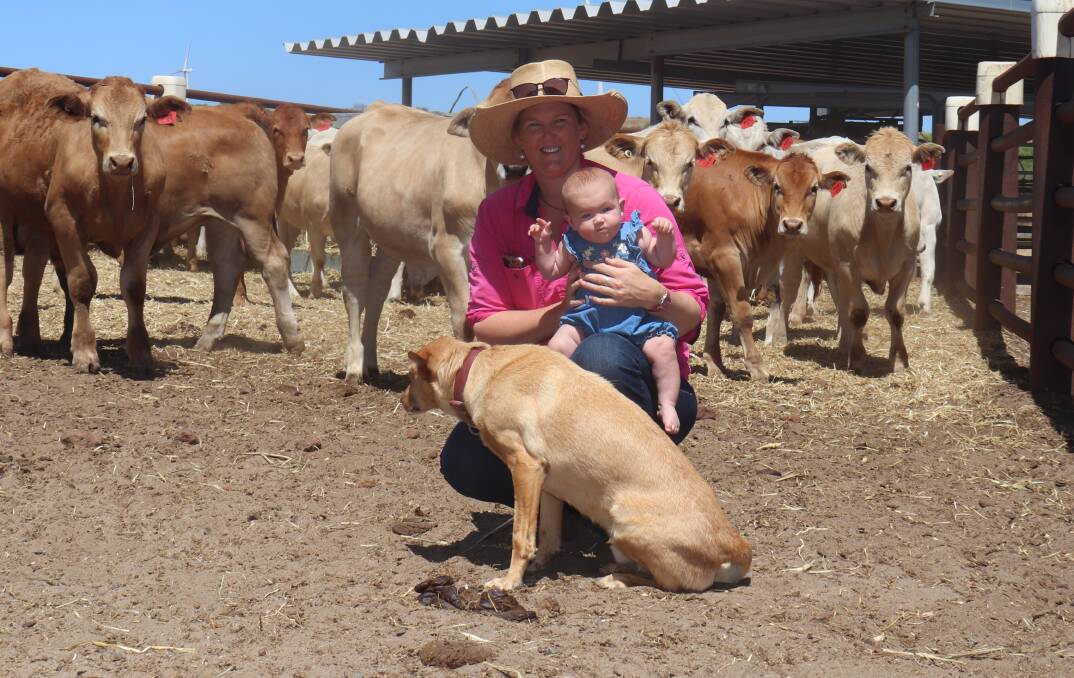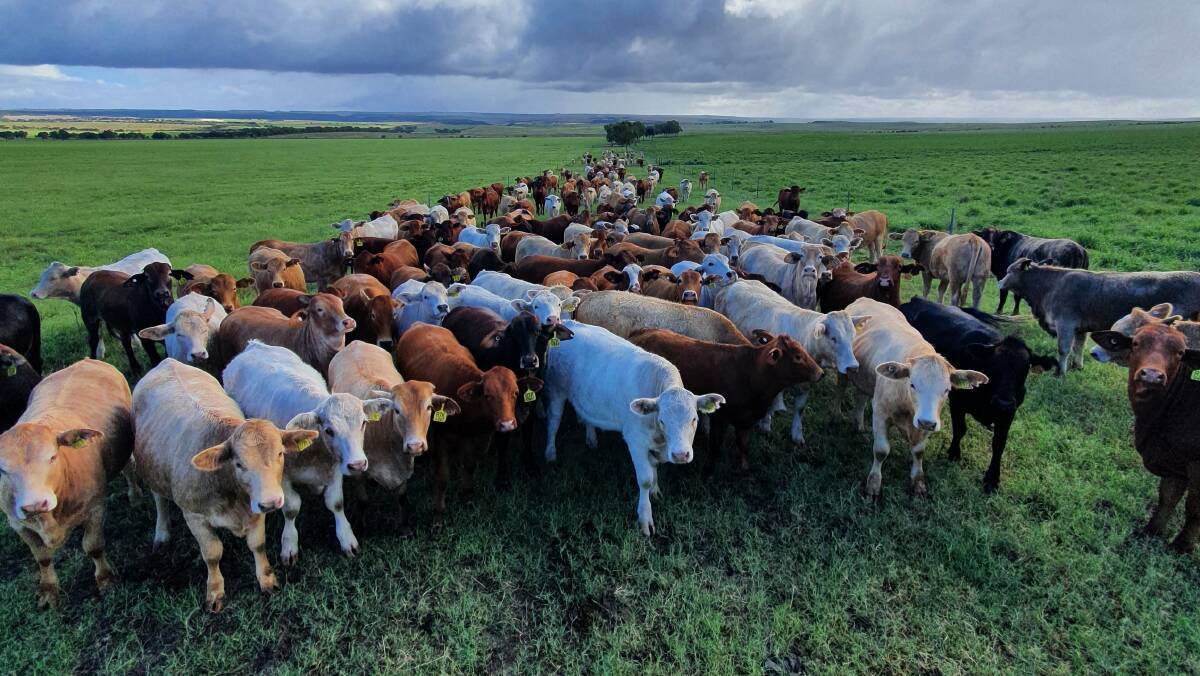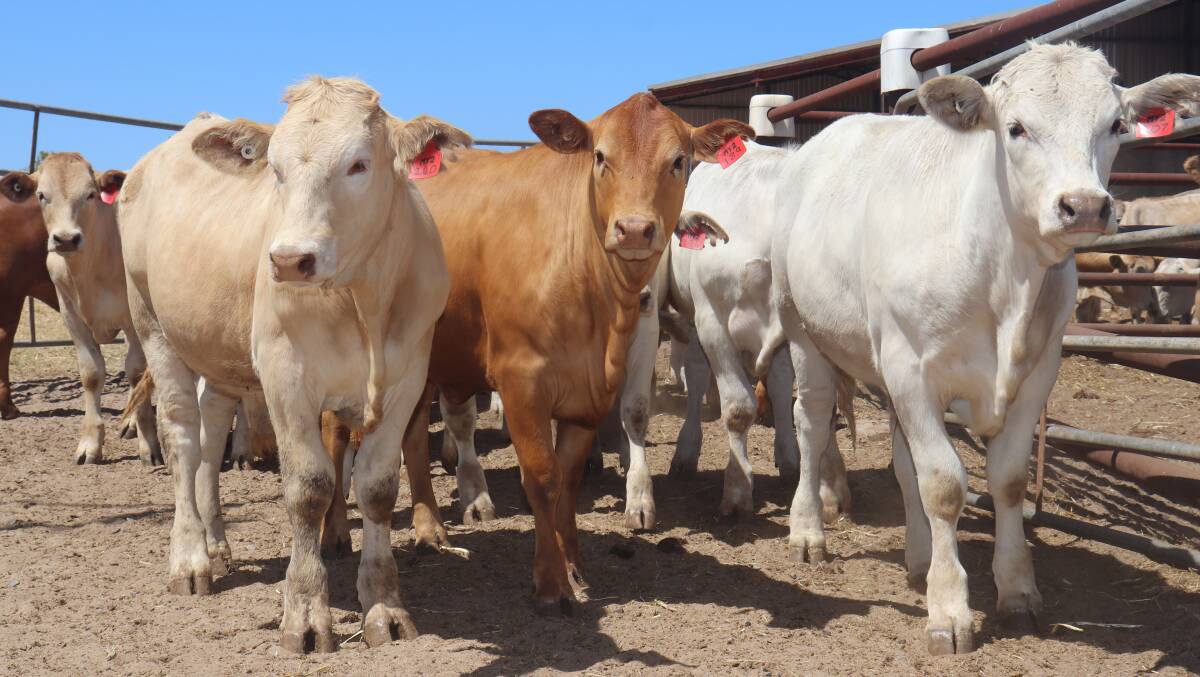
WITH cattle farming ingrained into her lifestyle since she was born, it is no wonder fourth-generation grazier Pip Bain is thriving within the beef industry.
Hailing from a long line of knowledgeable pastoral producers, she has seen almost every aspect of cattle farming, including the not-so-favourable moments the industry has had, as well as the most rewarding.
After being raised on a station in the Gascoyne, Ms Bain and her family found themselves settling at Mt Michael farm, Walkaway, more than 20 years ago.
- Subscribers have access to download our free app today from the App Store or Google Play
The more reliable rainfall and change of lifestyle seemed to be the perfect fit for the family, that was also running its annual and perennial seeding business.
Living on 1400 hectares of sand and gravel cattle country, Ms Bain farms alongside her father Grant and is raising her six-month-old daughter Billie with her partner George in her childhood home.
Mt Michael is home to 800 head of cattle, made up mostly of pastoral cattle.
The breeding aspect features 150 Charbray breeders that are known as the heritage mob that descended from the station some years ago.
"These are from our foundation bloodstock," Ms Bain said.

"I love the Charbray breed.
"They are big-roomy cows that are renowned for their great temperament."
Also describing the breed as very versatile, Ms Bain said they were perfect for them, always producing quality progeny.
"The breed is ideal, we always aim for the local market but also for the boat market too," Ms Bain said.
"The Charbrays fit quite comfortably in both making it easy for us to market them."
An additional mob of 130 Droughtmaster breeders from Fossil Downs station in the Kimberley region will be immersed into the breeding mob in future.
"We managed to get our hands on this mob as they were planned to calve out of season, they are beautiful, quality cows," Ms Bain said.
The 100 per cent subtropical perennial-based property acts as a reliable feed source for the cattle on the property, including the agisted cattle.
"We do what's called weight gain agistment," Ms Bain said.
"The cattle will be weighed upon arrival and from there every kilogram of weight they gain we will get paid for."
Ms Bain said the most recent herd of agistment cattle were Droughtmaster steers that gained an average of 500g per day.
"The cattle will be sold and leave the property when they reach a certain sale weight, which is dependent on the market," she said.

A constantly evolving market it is an opportunity for Ms Bain and her father to trial different breeds of cattle to suit.
"At the moment we are trying with Limousins and Shorthorns," she said.
The breeding program at the Walkaway property has always been traditional, even at the station.
In terms of breeding, the poll gene is an important trait to have.
"We try our best to buy poll bulls so we don't have to dehorn as much," Ms Bain said.
"Every year we are noticing that we are dehorning less and less calves."
An ideal breeder at Mt Michael is a cow with a big, deep frame, good temperament, a high milk content with bigger ears.
"Something with loose skin and a bigger dewlap is also something we look for," Ms Bain said.
"Occasionally we will pick a heifer that is slightly tight skinned but is really roomy and has a good temperament, so there is a bit of give."
In bulls, the Bains tend to look for two different types to serve both heifers and cows.
Using both Estimated Breeding Values and visual appraisal to select all of their bulls, the Bains seek bulls with good conformation, temperament and weight gain figures, along with a lower birthweight to cover the heifers.
Their breeding team consists of six Charolais bulls to cover all cows, sourced from Liberty Charolais, Toodyay, a Limousin bull from Tara Limousins, Allanooka, and a Shorthorn bull also from Liberty stud.
READ MORE:
"Our Shorthorn and Limousin bulls are being used over our heifers at the moment," Ms Bain said.
Heifers and cows are joined in separate mobs but during the same breeding period, with all bulls going in with the cows in late June.
Bulls are left out for a total of four months, ensuring every animal has the best chance of becoming pregnant.
"Dad and I pregnancy test together, it's a great management tool and is crucial so that we aren't feeding an animal that is dry," Ms Bain said.
"If our maiden heifers are empty they are sold straight away and if she's a maiden heifer who has raised a calf we will rest her for a year and she has to get in calf the following year."
Ms Bain said any of the cattle that tested empty were sold at the Muchea Livestock Centre or bought by butchers.
Calving commences in late April to July and is for roughly four months.
"Two thirds of the calves will drop in the first month and the rest will slowly calve afterwards," Ms Bain said.
"We have had good calving rates this year and we believe it's due to the mineral lick we use."
The lick is a winter lick which doesn't contain urea, although the summer lick used on the property does.
"This means when it rains it doesn't put the cattle at risk of urea poisoning," she said.
"We have been using it for four years now and we have had improved calving rates and weight gain since using it."
The calves are weaned in January every year.
During the weaning process the cattle are drafted from their mothers, who are already in calf again, and receive various health treatments.
"We mark multiple times during calving so the animals don't get too big, along with castrating and dehorning," Ms Bain said.
"The cattle are then processed at weaning and given a 5in1 vaccine, a NLIS (National Livestock Identification System) tag and visual tag."
During weaning the calves are also weighed two to three times to monitor weight gain.
"We have noticed during weaning that the calves tend to put on weight rather than lose it," Ms Bain said.
Post weaning, the quality heifer progeny are kept as replacements, depending on the season.
Steers are also sold based on the season, sold either straight off the cows or retained until they are at a saleable weight.
"We usually sell them at 400kg or until the animal reaches a value of $1500-$2000," Ms Bain said.
The Bain's cropping program is primarily for grazing and pasture management.
Inter row cropping is used as an additional feed source for weight gain in cattle rather than harvesting and selling it.
"We grow mainly cereal rye, forage barley and wheat," Ms Bain said.
"We have tried sorghum and turnips in the past, we have enough reserve feed to try different things so we like trialling with new crops to see what will grow best."
Cattle are rotationally grazed in a three day move schedule.
Currently five mobs of cattle are grazed over 60, 25ha paddocks and shifted every third day.
The contracting business run by the family has two different operations.
"We do annual seeding from April to June and have a perennial seeding contract from August and September," Ms Bain said.
"Last year we did just shy of 3000ha of annual seeding and 3500ha of perennials between our farm to Gillingarra and Northampton."
They use their own custom mix of subtropical perennial grasses that they have found are most suitable for the soil types and climates of their clients.
Ms Bain said preparation was the key.
"Any feral animals will need to be controlled prior to seeding, like grasshoppers, grubs, rabbits, pigs and kangaroos," she said.
"The paddock must also be sprayed out but not bare before we can come in with a seeder."
The family's strong holistic and regenerative, high intensity farming outlook allows them to maximise their production and give back to the community.
"We do this by employing more people and having more of a hands-on role with the stock and management practices," Ms Bain said.
"Our staff will be checking water and not sitting in a tractor or sprayer all day long.
"It's physical and we always run cattle in the yards so our workers will experience farming as a whole rather than doing one job, day-in, day-out."

